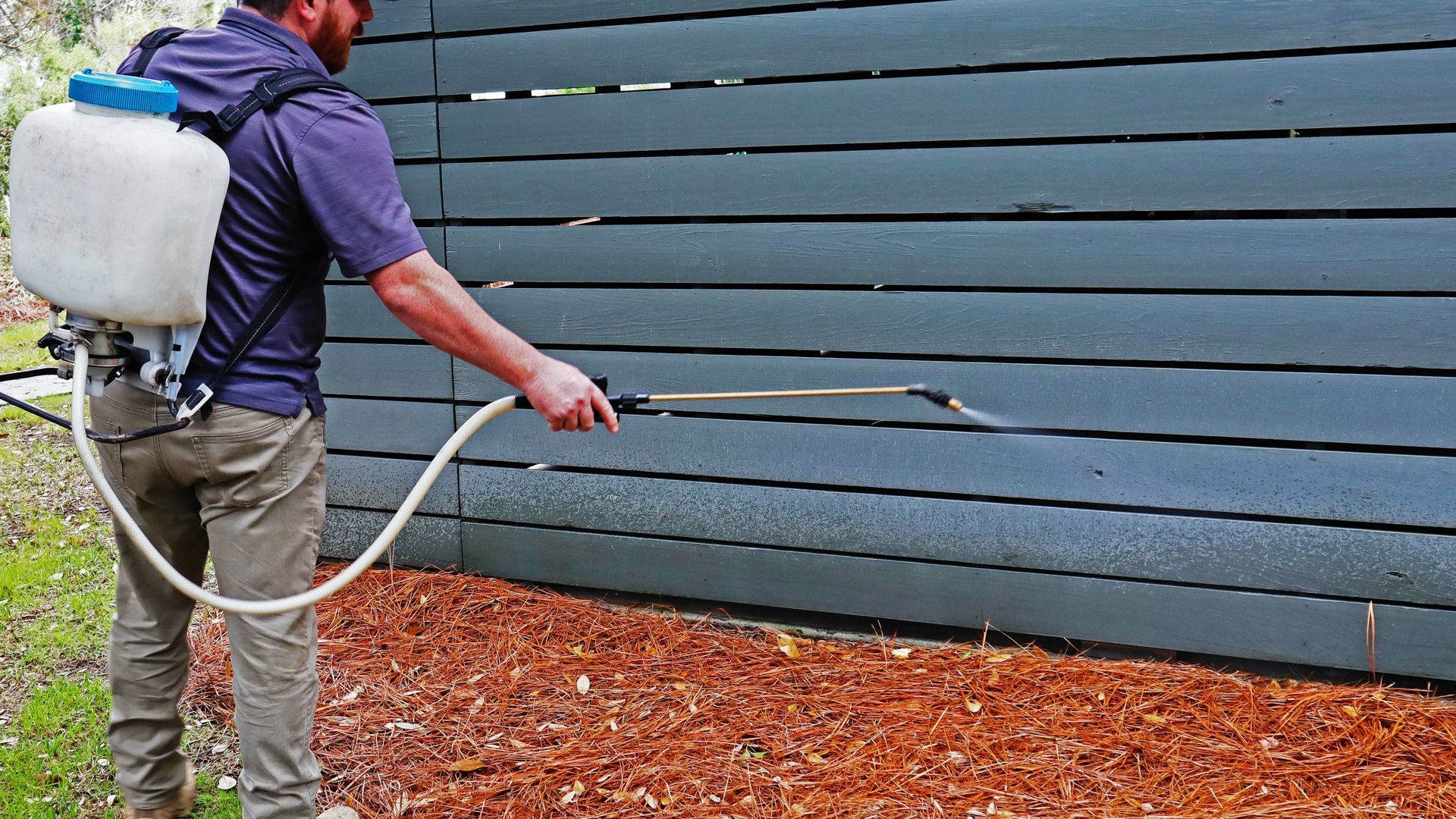
Fleas
What Are Fleas?
.2403120923550.jpg)
There are two types of fleas living in Connecticut that invade our yards, homes, and pets: dog fleas and cat fleas. Despite their name, neither feed on the blood of a specific host. Both cat and dog fleas are external parasites on dogs, cats, rodents, wild animals, and, if available, people – although we aren’t their preferred host. The cat flea is the more widespread flea species, but both can cause problems inside our homes.
Physical differences between the cat and dog fleas are microscopic. In general, fleas have bodies that are flattened from side to side, six legs with the hind legs being larger and more robust than the others, tube-like mouthparts that they use to feed on blood, and both species lack wings. Fleas are tiny and are often mistaken for specks of dirt, that is until they use their large back legs to jump out of the way!
Are Fleas Dangerous?
As fleas feed on the blood of various hosts, they can pass pathogens and parasites, including tapeworms, to both people and animals. Many people and animals are allergic to flea saliva; after being bitten, a raised, red, itchy rash often develops. Secondary infections due to excessive itching can occur. In our pets, excessive itching at flea bite sites can cause hair loss and open sores to develop.
In addition to physical problems, having fleas jumping around is enough to make anyone feel unwelcome in their own home.

Why Choose Rescue 1 Pest and Termite Control?
-
30+ Years of Pest Control ExperienceWith over 3 decades of experience, our team has seen it all and you can rely on us for effective solutions.
-
Customized Treatment PlansOur treatment plans are tailored to fit the needs of your particular situation and work within your budget.
-
Family-Owned & OperatedExperience the difference of using a local, family-owned and operated business that's familiar with the pests in our area.
-
Same Day Appointments AvailableCount on us for dependable and prompt pest control solutions; offering same-day and emergency services.
Why do I have a flea problem?
Whether you have pets living in your home or not, cat fleas and dog fleas can become a problem in your yard or house. Whether permanently residing in your yard or just traveling across it, wild animals are more often than not infested with fleas. After a female lays its eggs, they roll off the host’s body and into your yard. Once the fleas hatch, they look for a host to feed on – potentially, you or your pets.
When fleas are introduced into a home, they can quickly establish large populations because they breed rapidly and can complete their life cycle indoors. Rodents and other wild animals that move inside to nest can also introduce fleas into our homes. Fleas are also able to get inside on objects like used rugs and upholstered furniture.
Where will I find fleas?
There are many places fleas feed, breed, and live and where we and our pets could come into contact with them, such as the following:
- Yards
- Wooded areas and fields
- Grooming facilities and kennels
- Campgrounds and dog parks
If fleas have moved into your home, they spend most of their time on the backs of an animal host (if available). Recently hatched fleas and fleas not feeding on a host hide in upholstered furniture, the cracks of floors, rugs, bedding, blankets, and pet beds.


See what people in your area are saying
At Rescue 1 Pest and Termite Control, your satisfaction is our priority! See for yourself what our customers have to say about working with us.
-
"So happy to not have to deal with those bees!"
Stephanos came over and removed a yellow jacket's nest that was under my deck/sunroom. Stephanos was able to locate the nest underground and remove most of it while destroying and treating what was left in the ground.
- Joe V. -
"The service was very thorough, the technician, Zachary, was extremely knowledgeable. Would highly recommend."- Steven G.
-
"I whole heartedly recommend Rescue 1!"
I have to say I am very pleased with the service I have received from Rescue 1 Pest and Termite Control. It was wonderful knowing that my uninvited guest (a huge raccoon) was no longer staying at my house! I wholeheartedly recommend Rescue 1 Pest and Termi
- Carol V. -
"I will be a continued customer for sure!"
Just had my first service and I am so thankful I went with Rescue 1. My technician was extremely knowledgeable and friendly. He made sure to answer all of my questions, explain every step of the process, and made sure I was okay with everything.
- Meghan M. -
"Stefanos and Fran were great! Very knowledgeable and did the job very well. I am a repeat customer and will continue to use their services."- Dia O.
-
"Save yourself the hassle and go with Rescue 1!"
Hands down the best company you can go with. The technician was very knowledgeable, and respectful and took his time to explain everything. He answered all of my questions and gave me great suggestions on how to further rodent and animal-proof my house.
- Alex B. -
"What a fantastic experience with Jonathan!"
He came through checked for mice, set up boxes, and sealed the outside. He was very informative and had a ton of knowledge while walking me through each step. Thank you for your professionalism and responsiveness.
- Bot D. -
"Amazing service!"
They were professional and so knowledgeable! On time and always responded so quickly. I would recommend this company hands down to anyone who may need an exterminating company!!
- Jess L.
How can I prevent fleas in the future?
Prevent problems with fleas and other pests with the following prevention tips and the comprehensive pest control services at Rescue 1 Pest and Termite Control:
- Keep your grass cut short, cut back overgrown shrubs and bushes, and remove leaf and brush piles from your yard where fleas can hide.
- Partner with your pet’s veterinarian to place them on an appropriate flea prevention program.
- Vacuum regularly to pick up stray fleas that may find their way into your home on you or your pets.
- Place a fence around your yard to keep your pets in and neighborhood pets out.
- Eliminate food sources from your yard that attract flea-infested wild animals; keep lids on trash cans, remove bird feeders, and maintain gardens.
- Be careful when bringing used upholstered furniture or rugs into your home, as they could be harboring fleas, flea eggs, or flea larvae.
Learn more about our residential and commercial pest control services in Connecticut.


